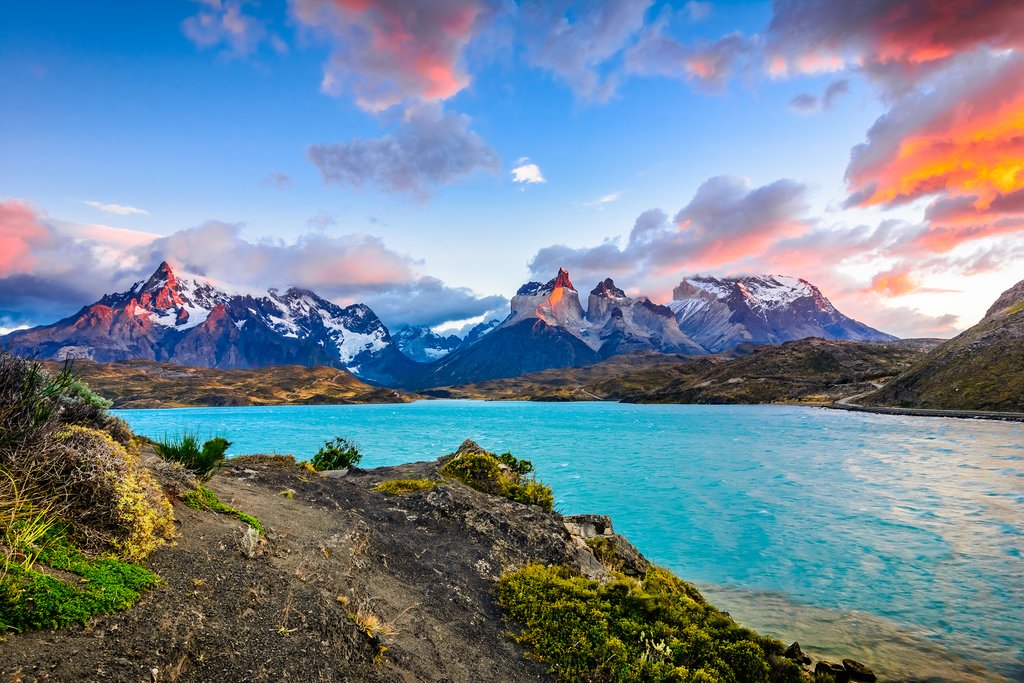Why are Chilean Coastal Mountains So Prominent?
Unveiling Nature's Masterpiece: The Enigmatic Rise of the Chilean Coastal Mountains
Chilean Coastal Mountains

Stretching majestically along the Pacific coast of South America, the Chilean Coastal Mountains stand as an awe-inspiring natural wonder, captivating travelers and scientists alike with their towering peaks and rugged beauty. Parallel to the iconic Andean Mountains, this prominent mountain range extends from Morro de Arica in the north to the Taitao Peninsula in the south, leaving an indelible mark on the landscape and culture of Chile. In this comprehensive exploration, we delve into the geological, geographical, and ecological factors that contribute to the prominence of the Chilean Coastal Mountains, unraveling the secrets behind their enduring allure.
Understanding the Geology:
The geological origins of the Chilean Coastal Mountains are rooted in the complex tectonic processes that have shaped the western edge of South America over millions of years. The mountains are primarily formed by the convergence of the South American Plate and the Nazca Plate, where the latter is subducted beneath the former along the Peru-Chile Trench. This subduction zone gives rise to intense tectonic activity, including the uplift of the Coastal Mountains, as well as volcanic eruptions and earthquakes along the Andean volcanic belt.
The Andean orogeny, a period of mountain-building that began around 25 million years ago, played a significant role in shaping the landscape of western South America. As the Nazca Plate continues to subduct beneath the South American Plate, the crust is compressed and folded, leading to the formation of the Andean and Coastal Mountain ranges. The uplift of the Coastal Mountains is further enhanced by the presence of faults and fractures in the Earth’s crust, which allow for vertical displacement and the creation of steep, rugged terrain.
Geographical Significance:
The prominence of the Chilean Coastal Mountains is also influenced by their strategic location along the Pacific coast of South America. Serving as a natural boundary between the Andes and the ocean, these mountains play a crucial role in regulating climate patterns, precipitation, and biodiversity in the region. The Coastal Mountains intercept moisture-laden winds from the Pacific Ocean, resulting in high levels of precipitation along the coast and creating a unique microclimate that supports lush forests, rivers, and diverse ecosystems.
In addition to their climatic significance, the Chilean Coastal Mountains are home to a wealth of natural resources and cultural heritage sites. The region’s fertile valleys and coastal plains support agriculture and viticulture, while its rivers provide hydroelectric power and irrigation for agricultural activities. Furthermore, the mountains are dotted with archaeological sites, ancient settlements, and indigenous communities that preserve the rich cultural heritage of Chile. Just as we know Why are Cordillera Huayhuash Mountains So Prominent?
Ecological Diversity:
The prominence of the Chilean Coastal Mountains is further accentuated by their rich biodiversity and ecological diversity. The mountains are characterized by a variety of habitats, including temperate rainforests, alpine meadows, and coastal wetlands, each supporting a unique array of plant and animal species. From the towering Araucaria trees of the Valdivian rainforest to the elusive puma and Andean condor, the Coastal Mountains are home to a diverse range of flora and fauna that are adapted to the region’s rugged terrain and climatic extremes.
The mountains also serve as important wildlife corridors and migration routes for species traveling between the Andes and the coast. Protected areas such as national parks and reserves play a crucial role in preserving the ecological integrity of the Coastal Mountains and providing habitat for threatened and endangered species. Additionally, the mountains are a hotspot for ecotourism, offering opportunities for hiking, birdwatching, and wildlife viewing that allow visitors to experience the region’s natural beauty firsthand.
Cultural Significance:
Beyond their geological and ecological importance, the Chilean Coastal Mountains hold significant cultural and spiritual value for the people of Chile. Indigenous communities such as the Mapuche, Huilliche, and Chono have inhabited these mountains for thousands of years, drawing inspiration from their majestic landscapes and natural resources. The mountains are imbued with cultural symbols and traditions that reflect the deep connection between humans and the natural world, including sacred sites, ceremonial practices, and oral histories passed down through generations.
In addition to their cultural heritage, the Chilean Coastal Mountains are a source of inspiration for artists, writers, and poets who seek to capture the beauty and grandeur of the natural world. From the evocative landscapes of Chilean painters such as Claudio Bravo and Roberto Matta to the lyrical poetry of Pablo Neruda and Gabriela Mistral, the mountains have inspired countless works of art and literature that celebrate the spirit of exploration and reverence for nature.
Conclusion:
In conclusion, the prominence of the Chilean Coastal Mountains is a testament to the geological, geographical, ecological, and cultural forces that have shaped the landscape of western South America. From their origins in the tectonic collisions of the Andean orogeny to their role as a natural barrier between land and sea, these mountains hold a special place in the hearts and minds of the people of Chile and the world. By understanding the factors that contribute to their prominence, we gain a deeper appreciation for the enduring allure and significance of the Chilean Coastal Mountains, ensuring their preservation for generations to come.
Know More about Chilean Coast Mountains.
What Are The Tourist Places Nearest to Chilean Coast Mountains?
When Were Chilean Coast Mountains Formed?
Where Are Chilean Coastal Mountains Located?
Who Discovered Chilean Coastal Mountains?
How to Reach Chilean Coastal Mountains?




